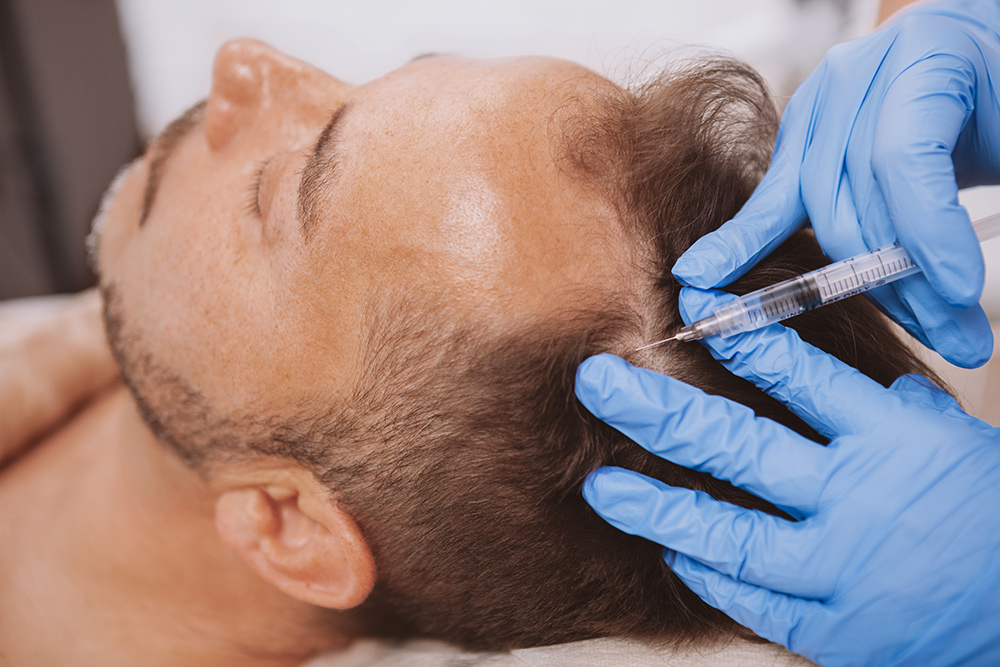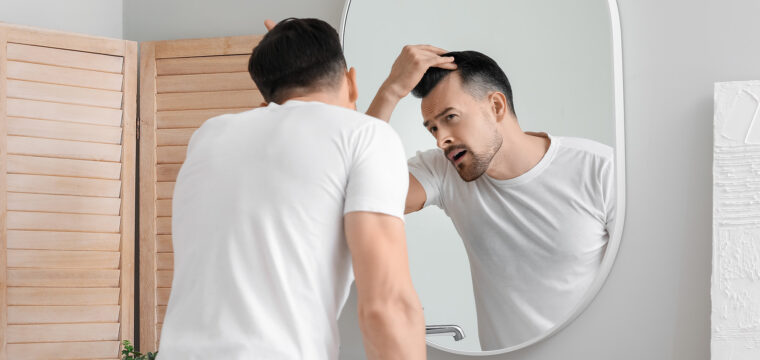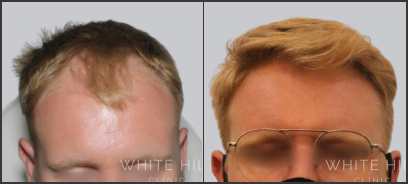Early Signs of Balding: How to Recognise Hair Loss Before It Progresses
Last updated on March 20, 2025
Noticing early signs of balding can be concerning, but identifying them at an early stage provides the best opportunity to slow progression and explore effective solutions. Many men experience male pattern baldness, a common condition where hair follicles shrink over time, leading to gradual thinning and eventual hair loss.
While genetics play a significant role, other factors can contribute to thinning hair and excessive hair loss. Understanding these early indicators allows you to take proactive steps to maintain healthy hair and consider hair loss treatments that can help stimulate hair follicles and support hair regrowth.
Early Signs of Balding to Look Out For
1. Receding Hairline
One of the most noticeable signs of hair loss is a receding hairline, where the hair around the temples starts to thin, creating an M-shaped pattern. This is one of the first indicators of male pattern baldness diagnosed in men.
2. Thinning Hair at the Crown
Another early symptom is hair thinning on the top of the head. This can start subtly, with a wider parting or increased visibility of the scalp under certain lighting. Left untreated, this can lead to further hair loss.
3. Excessive Hair Shedding
While it is normal to lose some hair daily, an increase in excessive hair loss may indicate an issue. Finding more hair on your pillow, in the shower drain, or on your hairbrush can suggest that hair loss occurs beyond the usual cycle of shedding and regrowth.
4. Slower Hair Growth
If your hair is taking longer to grow after a haircut, it could be due to shrinking hair follicles, which gradually produce finer, weaker strands. This can lead to patchy hair loss or gradual thinning over time.
5. Changes in Hair Texture
Thinner, weaker hair that lacks its usual volume can also signal male pattern baldness. If your hair is becoming more fragile or difficult to style, it could indicate that your hair follicles are not producing as many strong, healthy strands as before.

Recognising the early signs of balding can help you take action before hair loss becomes more noticeable.
What to Do If You Notice Early Signs of Balding
If you suspect you’re losing hair, taking early action can help stimulate hair growth and slow down hair thinning. Here’s what you can do:
- Monitor Changes – Keep an eye on your hair regrowth and track any significant changes over time.
- Maintain Healthy Hair – A balanced diet, stress management, and scalp care can support hair follicles and promote stronger hair.
- Seek a Professional Assessment – A specialist can help diagnose male pattern baldness and recommend personalised solutions.
- Explore Hair Loss Treatments – Depending on the severity, options such as hair restoration treatments may help treat male pattern baldness effectively.
Hair Loss Treatment Options
If you’re experiencing male pattern baldness or thinning hair, several treatments can help stimulate hair follicles and support hair regrowth. At White Hill Clinic, treatment options include:
1. Hair Transplants
For individuals with significant hair thinning, hair transplant procedures can restore natural density by redistributing healthy hair follicles to thinning areas. This treatment is ideal for those with permanent hair loss, offering a long-term solution to restore hair growth in areas affected by male pattern baldness.
2. Medical Hair Loss Treatments
Certain medical approaches can help treat male pattern baldness, slow further hair loss, and encourage healthy hair growth. These hair loss treatments work by targeting the underlying causes of hair loss, such as hormonal imbalances or follicle shrinkage, to help maintain existing hair and promote regrowth where possible.
3. Scalp Health Treatments
A healthy scalp is essential for stimulating hair growth and improving hair regrowth. Scalp Health treatments help create the ideal environment for hair follicles to thrive by addressing issues like poor circulation, excess oil buildup, or inflammation, which can contribute to thinning hair.

Early signs of balding often start gradually, making regular hair checks an important part of hair care.
Conclusion
Recognising the early signs of balding gives you the best chance to take control of your hair loss treatment options before further hair loss progresses. Whether you’re dealing with a receding hairline, hair thinning, or gradual thinning, exploring professional solutions can help maintain healthy hair and promote long-term hair regrowth. Contact us today for expert advice and hair restoration options.
How to Book a Consultation
To book a FREE consultation you can call us directly at 1300 512 345 or fill out our online form to schedule your appointment. If you have any questions or would like more information, you can also reach out to us via our contact page. We’re here to assist you and guide you through every step of the process.
FAQs
Can hair loss happen suddenly?
Yes, while most cases of male pattern baldness occur gradually, some individuals experience sudden hair loss due to factors like stress, illness, or certain medical conditions. If you notice rapid shedding, it’s best to consult a specialist to determine the cause.
Is hair loss the same for men and women?
No, men typically experience a receding hairline or thinning at the crown, while female pattern baldness often causes diffuse thinning across the scalp. Each condition requires a tailored approach to treatment.
Can you stop male pattern baldness from progressing?
While it can’t always be fully reversed, some treatments can help prevent male pattern baldness from worsening by strengthening existing hair and supporting regrowth.
What are the different types of hair loss?
There is more than one type of hair loss, including male pattern baldness, stress-related shedding, and autoimmune conditions that affect the scalp.
What is alopecia areata?
Alopecia areata is an autoimmune condition that causes patchy hair loss, where the immune system attacks hair follicles, leading to sudden bald spots.










